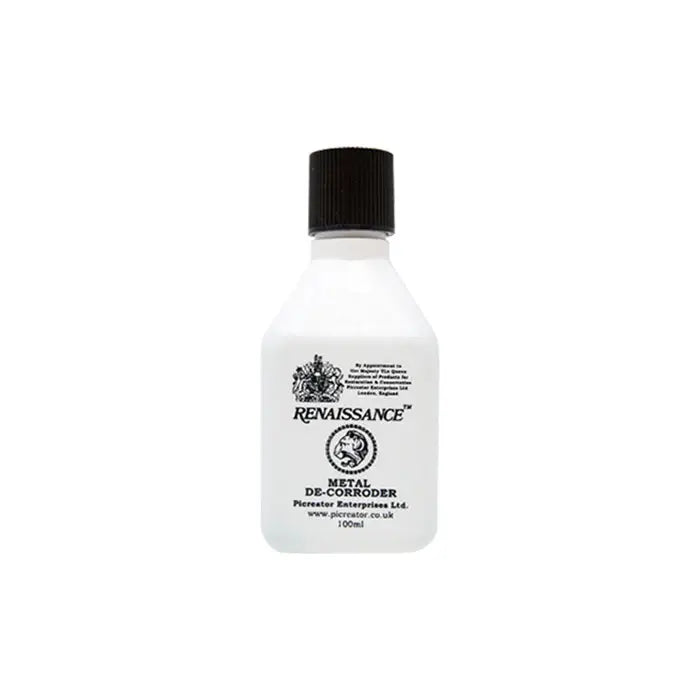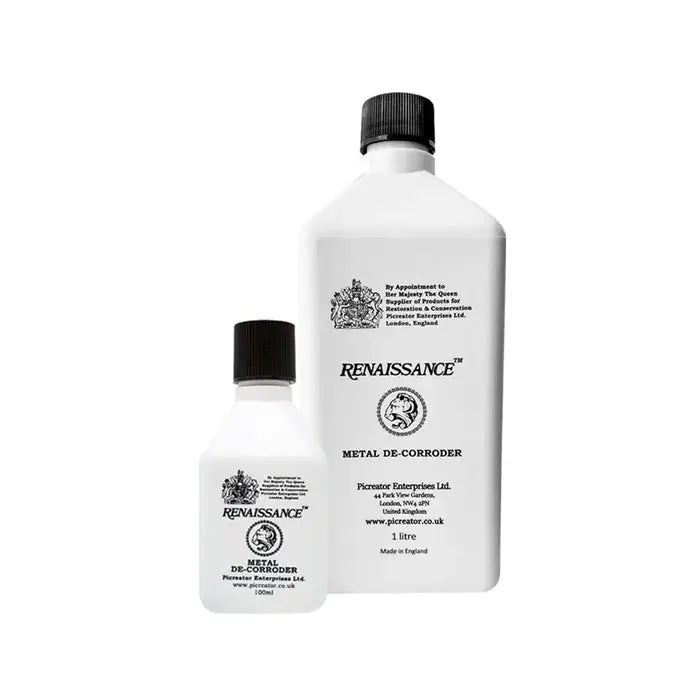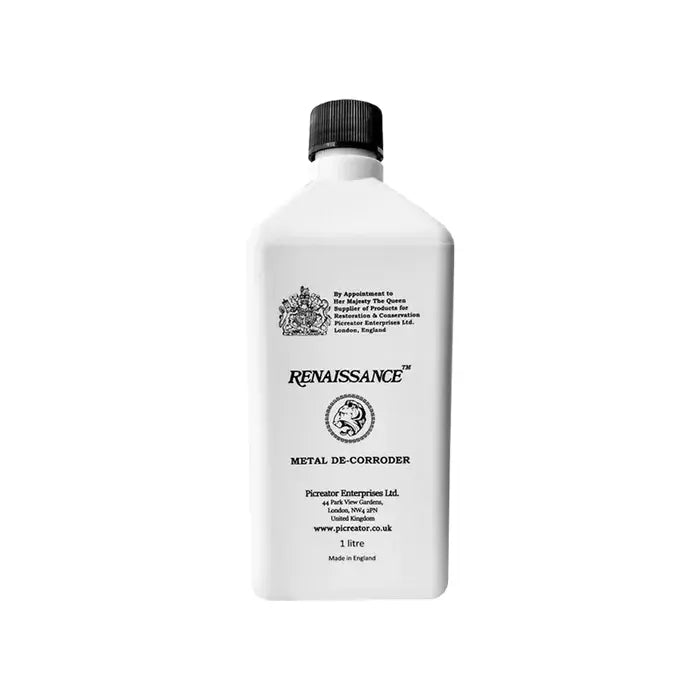Picreator Enterprises
Renaissance Metal De-Corroder
Renaissance Metal De-Corroder
7 in stock
Couldn't load pickup availability
Safe, Non-toxic System for Rust Removal with Full Control
Amine complex of hydro-oxycarboxilic acid
in aqueous solution. pH: approximately 4.0
**************************
SCOPE:
iron, bronze, copper and copper alloys, brass, steel,
zinc and galvanized materials.
Also effectively cleans SCALE and rusty water stains.
Treatment selectively ruptures the bond between base metal and corrosion layer, reducing rust to a sludge, which is easily wiped or brushed away. Clean-water rinse stops the process.
Even relatively prolonged immersion over several days has no significant effect on sound metal, thus giving the conservator complete control over the process – and freedom from it.
The totally benign nature of the product eliminates work and health hazards associated with common de-rusting systems such as those based on phosphoric and hydrochloric acids. Gloves, masks or protective clothing are not required; normal ventilation and common-sense hygiene procedures should be observed.
Following treatment, metal surfaces are stabilized for up to 14 days, giving ample time for applying long-term protection (such as Renaissance micro-crystalline wax polish, which confers a tough – but reversible – glass-clear lustrous finish).
Bi-metallic electrolytic effects between dissimilar metals are insignificant in treatment periods of up to 48 hours. There is no attack on zinc coatings, excepting greatly prolonged immersion.
Treatment is most effective at temperatures between 10°C and 20°C. Colder solutions slow the action still further – a useful quality when objects are left immersed over a weekend. Contrast this safe, gentle handling of metals with the more vigorous, often deleterious action of mineral acids.
Loose rust or scale should be wire-brushed and surfaces de-greased to allow optimum performance. Immerse objects will be clear of light corrosion in as little as two minutes. During longer immersion for heavier rusting, periodic checks can be made by rubbing the object with a finger. Brushing speeds the process.
Storage and treatment vessels of mild steel, porcelain, rubber, polythene or other plastics are suitable. Galvanized, tin, zinc or lead-lined tanks are NOT suitable.
After use of the solution, separate it from any sediment by siphoning into a clean container and top up occasionally with fresh solution. The product remains effective for many weeks.
Share



- Choosing a selection results in a full page refresh.
- Opens in a new window.


